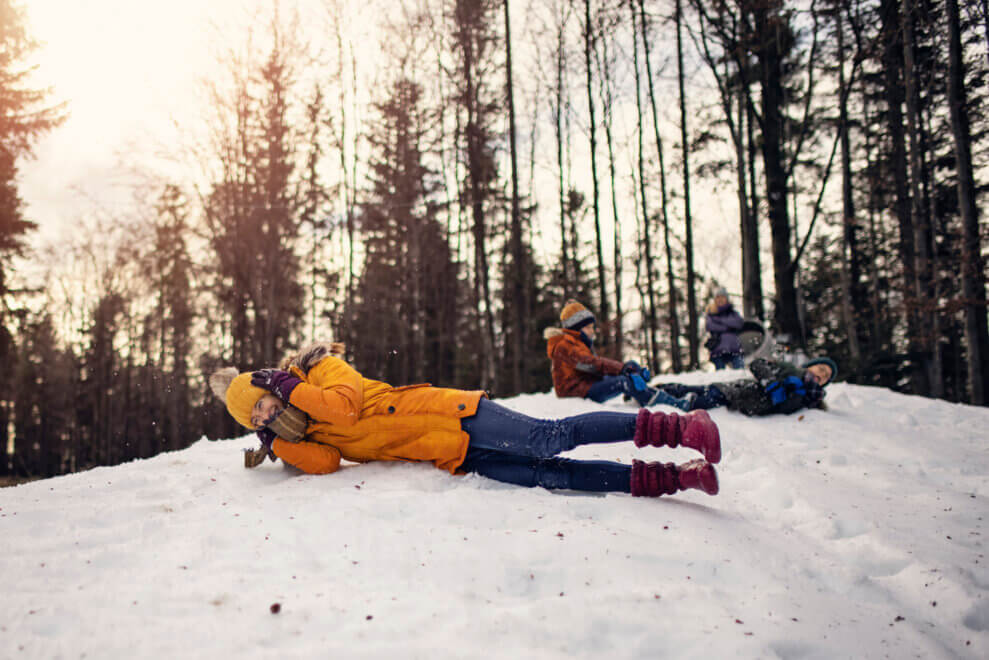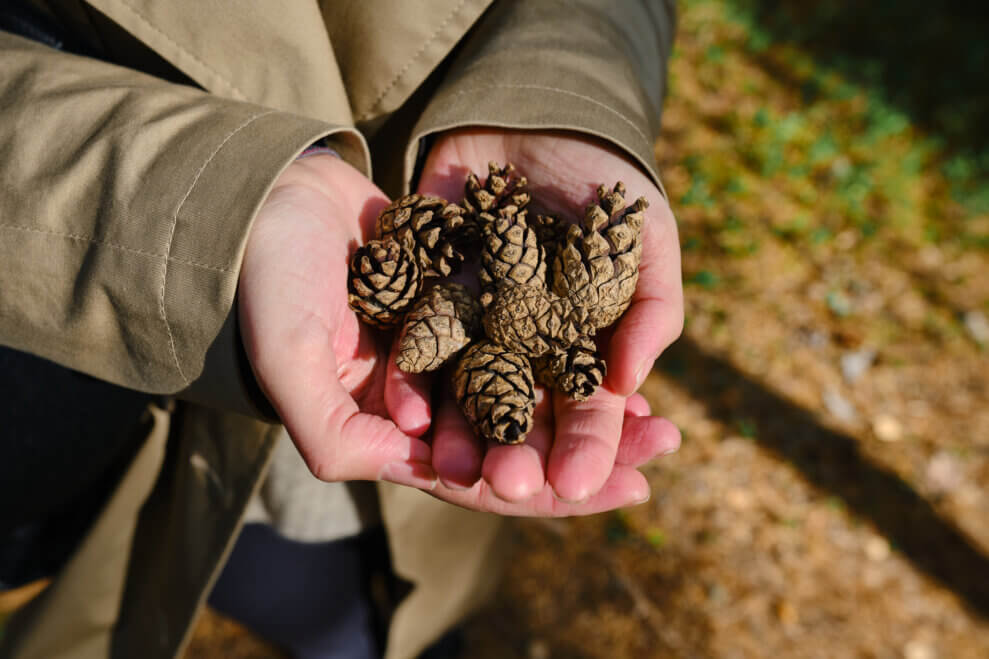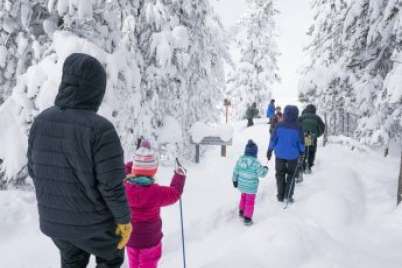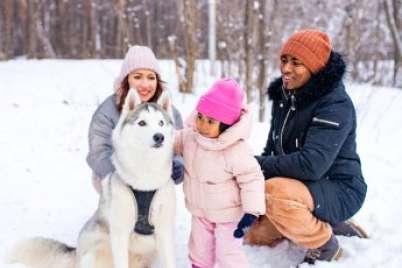
Winter activities scavenger hunt + free printable
Winter is here! Maybe there’s snow where you live, maybe not. No problem! This winter activities scavenger hunt is a fun way for children to explore winter changes and practice fundamental movement skills along the way. In this article, you’ll find a free printable winter scavenger hunt along with a detailed description of each activity to help your child get a head start in developing physical literacy this winter.
Winter activities scavenger hunt printable
Download and print the fun winter scavenger hunt so that you have it on hand the next time you and your child go outside to visit a park, nature trail, or your backyard. There are 25 separate outdoor activities on this printable. Your child can do them all in one day or spread them over a period of time. You could even cut the scavenger hunt into individual squares, place them in a jar, and have your child pick a random activity for each day. Have fun with this activity!

Reasons and resources for each activity
Below are detailed explanations for each activity along with suggestions for making each activity easier or more challenging for your child as needed.
Make a snow angel
Experimenting with movement can help develop motor patterns that can help with developing physical literacy. Making a snow angel does just that! To make a perfect snow angel, have your child lay in the snow on her back, move her arms up and down and legs in and out. These are the same motions for doing jumping jacks, minus the jumping. If your child is up for the challenge, see if they can do five jumping jacks in the snow.
If there’s no snow where you live, find a sand box at the park where your child can practice a sand angel or jumping jacks in the sand!
Look for a winter bird
Not all birds migrate south for the winter season. Some birds, like the black-capped chickadee, stick around and brave the wintery weather. For this prompt, encourage your child to look for a winter bird. What kind of bird did they spot? There are several helpful bird identification apps that you can use to help your child identify birds. If there are no birds to be seen, see if you can hear a bird singing or chirping.
Hop like a snowshoe hare
Snowshoe hares have big hind feet that help them hop on top of the snow. Without those big snowshoe feet, hopping on snow can be tricky business. Hopping on its own is a more advanced movement skill because it involves jumping using forward motion, but hopping in the snow can be extra challenging because your child’s feet might sink down with each hoppity-hop. If this activity is too challenging for your child, encourage your child to hop in one place. If this activity is too easy, make it into a long hop competition. How far can your child hop?
Find an icicle
Icicles are usually found wherever water melts and freezes. Some good places to look are the downspout of rain gutters, the edges of roof tops, and along creeks. If your child finds an easy to reach icicle, break it off. Icicles, like sticks, are great for creative play. An icicle can be a wand, flute, sword, pencil… you get the idea.
Inspect an evergreen tree
During the winter, evergreen trees stay green! Evergreen trees have specially designed “leaves” that don’t freeze when they get cold. There are lots of different types of evergreen to inspect during the winter no matter where you live. Here are a few evergreens to find: pine, fir, cedar, spruce, juniper, and cypress. When inspecting evergreens, encourage your child to use all their senses. What does the tree look like? Feel like? Smell like?
Roll down a hill
Rolling is a movement milestone that develops around three to four months of age, but rolling is not just for babies. Big kids benefit from rolling too. Rolling helps to develop the vestibular system (balance and spatial orientation) in a child’s body. For this activity, encourage your child to try rolling like a log down a hill or somersaulting on the ground or in the snow, with snow gear on of course!

Spot an empty nest
The best time of year to spot a bird’s nest is the winter when all the deciduous trees have lost their leaves. For this activity, encourage your child to look up into the bare trees and see if she can spot a nest. You might be surprised to discover how many nests you can find!
Find a (frozen) puddle
In the winter, depending on where you live, there might be a lot of puddles around. Even in colder places puddles will form as the weather warms and cools. For this prompt, invite your child to find a puddle. If the puddle is frozen, have a look through the ice. What can you see? Does the ice crack if you stomp on it? If the puddle isn’t frozen, encourage your child to enjoy some puddle play.
Stomp like Sasquatch
Sasquatch (or Bigfoot) is a big hairy beast with gigantic feet that enjoys a romp through the mountains. Stories and folktales of this mythical beast have been around for ages. For this activity, have your child stomp through the snow like Sasquatch. What kind of sounds do they make?
Find three different animal tracks
Snow lets us “see” the coming and going of animals that would normally go unnoticed. When animals walk over the snow they leave a distinct set of footprints behind. See if your child can find three different types of animal tracks in the snow. Here is a helpful guide [PDF] that you can print and take outside. If you live in an urban centre away from the forest, look for chickadee, dog, or cat tracks.
Search for a brown leaf
When leaves fall to the ground in the autumn they turn brown and start to decompose. It can take up to a year for a leaf to completely break down so it should be quite easy to still find leaves littered about in the middle of winter. For this prompt, have your child search the ground for an old brown leaf. If there’s snow on the ground your child might have to do a bit of digging.
Twirl like a snowflake
Just like rolling, twirling and spinning help develop a child’s vestibular system (balance and spatial orientation). Encourage your child to pretend to be a snowflake twirling or spinning through the sky. Do snowflakes spin slowly or quickly? Do they spin with arms out or in?
Jump over a stick
Jumping is a foundational movement skill that starts to develop around the age of two and continues to be refined until the age of five and older. Children of all ages should be encouraged to jump because it helps to develop coordination, balance, and muscle and bone strength. For this activity, help your young child find a stick to jump over. Bigger kids can try jumping over bigger objects like a log or a pile of snow.
Crawl like a polar bear
Crawling isn’t just for babies, it’s for big kids too! Crawling has been shown to help children with coordination, gross motor skills, and stress. There are different types of crawls that your child can try for this activity: a traditional crawl (hands and knees), an army crawl, a bear crawl, or a crab crawl. Which type of crawl would a bear use? Fun fact: Bears don’t hibernate but go into a deep sleep called torpor. Hibernation and torpor are very similar but torpor allows bears to wake up easily if they need to.

Stand on one leg like a pine tree
This is known as the “tree pose” in yoga. To do this pose, have your child stand tall and straight with their feet together. Next, get your child to bring one foot off the ground and place it on the inside of the other knee. Can your child stay balanced? If yes, ask your child to raise his arms above his head. How long can your child hold the pose? Check out this article for more fun yoga poses to try with kids.
Collect three rocks
Rocks come in all shapes, sizes, and colours. For this activity, encourage your child to find three rocks with different colours and shapes. Notice how the colour or rocks change when they’re dry versus wet. If there’s snow on the ground, look for rocks in areas where snow may have melted.
Prance like a reindeer
Reindeer, also known as caribou, are constantly on the move and love to run and prance. When reindeer prance they take quick springy steps. Encourage your child to try prancing like a reindeer. Experimenting with movement is a great way of developing physical literacy skills.
Search for winter berries
Winter can seem bleak with all the hues of white and gray, but there are still pops of colours to be found. For this activity, search for winter berries on bushes, trees, and plants. Most winter berries are not edible, so be sure to remind your child that winter berries are for birds only.
Dig a hole in the snow
Digging is an activity that’s great for developing fine and gross motor skills as well as coordination. For this activity your child can dig with mitts or a shovel. For an extra challenge, give your child a spoon to dig the hole. You can even hide some plastic toys in the snow and make this a fun excavation activity. If there’s no snow, walk to the nearest playground where you can find a sandbox and bring your beach bucket and shovel.
Leap like an arctic fox
Have you ever seen an arctic fox hunt? It’s incredible to watch. While I don’t suggest your child bury their head in the snow, this is a fun activity to practice leaping and jumping.
Waddle like a penguin
Penguins are one of the few birds that can’t fly. Instead they waddle on dry ground and swim in the water. For this activity, have your child try waddling like a penguin. Imitating animals is a fun way to practice movement skills and improve physical literacy. For more animal friends to imitate, here is a great list.
Find four pinecones
Searching for and picking up pinecones from the ground develops motor skills and coordination. Keep the pinecones for decorating your home or use them to make some cute pinecone crafts with your child.

Flap like a snowy owl
Snowy owls are beautiful white owls that fly silently through the sky. For this prompt, encourage your child to move his arms up and down silently like a snowy owl. He can try flapping slowly or flapping quickly. Make it tricky by flapping one arm slowly and the other quickly.
Build like a beaver
Beavers stay busy all winter long building their dam and finding food to eat. For this activity, encourage your child to use snow, sticks, or anything else on hand to build like a beaver. This is an open-ended activity to encourage the use of creativity and problem-solving.
Toss a snowball
Tossing and throwing are foundational movement skills that play an important role in various sports and activities. Like any movement skill, children need plenty of opportunities for practice. In the winter, tossing snowballs is a great way to get in some throwing practice. Challenge your child to see how far and how high they can toss a snowball or set up a target practice. If you don’t have snow, try tossing a pinecone instead. Here are some tips for teaching your child how to throw correctly.
Most importantly, have fun!
I hope you and your child enjoy exploring winter with this winter activities scavenger hunt. Don’t forget to share this resource with a friend, or better yet invite a friend to join you. If you have any questions or comments feel free to leave them in the comments section below.
Receive free tips and activities
Have more great games, activity ideas and tips sent to you weekly! Sign up for the Active for Life newsletter here.





